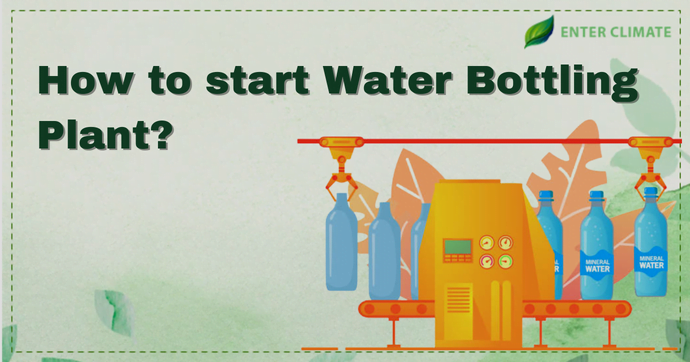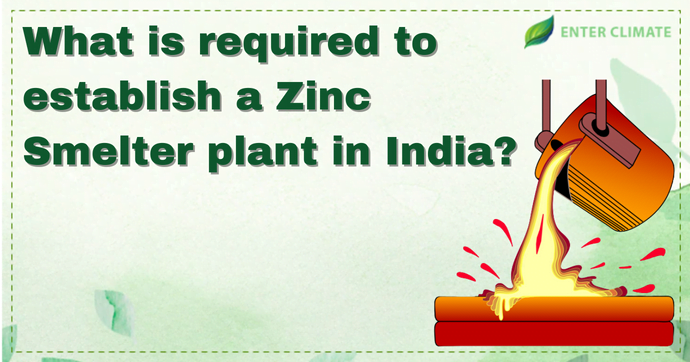How to obtain license for paint manufacturing unit?
 20 Dec, 2022
20 Dec, 2022 
The growth in India’s paint sector has been an outlier in the overall domestic consumer space. India is the second largest paint market in the Asia-pacific region and is dominated by the decorative paint segment with approximately 75% market share. This differs from the global structure, where the decorative or architectural segment covers only 40% of the paint market. The rest 25% of the market is of industrial paint, whose lower contribution to India’s overall paint market is probably attributable to lower infrastructure and industrial development compared to other highly ranked countries. The demand for paint is increasing in both segments due to the country’s growing infrastructure and development activities. The Indian paint industry has also witnessed a gradual shift in consumer preferences from traditional whitewash to better-quality paints. Besides, it is also seeing a healthy competitive environment, where players are applying different strategies to tap the growing demand in the market for a larger regional share. Additionally, the rise in urbanisation and disposable income of the average middle class along with the ever-increasing rural market, shortening of the repainting cycle, upgradation of existing infrastructure, increase in the sale of premium-end products and launch of many innovative products (like eco-friendly, odour free and dust & water-resistant paints) are the major drivers that are pushing the growth of the organised paint industry. However, to function in the country, these units must obtain a paint manufacturing license.
|
Decorative Paint Segment (75%- 80%) |
Industrial Paint Segment (20%- 25% |
|
Interior Paints/emulsions /enamels |
General Industrial |
|
Exterior Paint/emulsions /enamels |
Automotive coating |
|
Distemper |
Protective coating |
|
Putty |
Powder coating |
|
Wood coatings |
Glass coating |
|
Cement paints |
Pipe coating |
|
Primers and thinners |
Niche segments (coil, marine, refinish coatings) |
Trends in the Paint Industry
Since the mid-2000s, the Indian market has been moving towards environmentally compliant water-based paints from solvent-based ones. In addition to being eco-friendlier, water-based paints provide better gross margins than solvent-based paints as they are less sensitive. Water-based paints also use certain crude-derived products in their manufacturing process. In line with the global trend, consumers have been increasingly preferring water-based coatings because of their durability, washability and superior aesthetics. Although demand for oil/solvent-based paints is here to stay, exposure to price fluctuations in crude oil can be reduced to a certain extent, given that usage of water-based coatings is increasing. The demand for various paints for different surfaces and the availability of water-soluble options have also added to the domestic market for decorative paints. The repainting life cycle has also reduced from 7—8 years to 4-5 years today, further adding to the demand.
Waste generated by the Industry
The manufacturing process for paint involves mixing different substances that end up as the final product. This mixture is produced mechanically and does not require chemical reactions, reducing environmental hazards in the process. However, solid, liquid and gaseous waste emissions are generated in the process that presents high levels of COD (chemical oxygen demand) due to the presence of organic substances used, such as styrene, solvents, acetones, benzenes, phenols, preservatives etc.
In addition, the waste also contains heavy metal residues that come from the pigments used. Total suspended particulate matter, volatile organic compounds etc., also pose a risk to the workers and the environment.
Therefore, large-scale paint manufacturers generally have an in-house wastewater treatment facility that can treat all waste(solid, liquid and gaseous) generated on-site. All medium or small-scale businesses must regularly dispose of this waste by hiring a TSDF facility service to manage industrial waste from the manufacturing process. The large units with higher production capacity and, thereby, higher waste generation will need hazardous waste authorisation if they decide to perform in-house waste treatment. The emission of volatile organic compounds affects the paint industry, especially manufacturers of industrial oil-based paints. It is estimated that all coatings, including stains and varnishes, are responsible for releasing considerable VOC into the atmosphere.
Licences required to start paint manufacturing Unit
Following are the licences and Permits needed by a paint unit to operate in the country
Consent NOC from State Pollution Control Board
Consent Certificate: There are two stages in the Consent certificate, i.e. Consent to Establish (CTE) and Consent to Operate (CTO). CTE is provided to the paint manufacturing plant before the unit construction and CTO before the start of operation. This NOC is mandatory under the Air and Water Acts[1] as the Industry has been categorised under the red category (or highly polluting industries). The Industry will have to acquire a CTO license for paint manufacturing after installing protocols and pollution control equipment. The detailed process of how to obtain a licence for a paint manufacturing unit has been tabulated below.
Step 1: Document and Fee submission for CTE NOC
The applicant will submit a complete form on the concerned state’s Online Consent Management and Monitoring System (OCMMS), along with the required documents and the application fee. The application is forwarded to the approving authority to grant a CTE license for paint manufacturing.
Step 2: Document Scrutiny the Authorities
The Section officer or Supervising officer in the SPCB/PCC will scrutinise the application and make recommendations, as the final decision has to be taken within 30 days.
Step 3: Rectification of issues raised during the scrutiny
Any problems or incomplete documentation will be alerted to the applicant. A CTE will be granted if all issues are addressed based on the recommendation.
Step 4: Application for CTO NOC
A CTO application that is complete in all respect should be submitted at least a month before the operation’s commenting and after the unit’s setup. The validity period of consent to operate is restricted according to the fees remitted by the applicant and the category in which the Industry falls.
Step 5: Document Scrutiny and inspection by the Authorities
The concerned officer will scrutinise all Documents to verify if all conditions in the CTE have been complied with. A site inspection by the Inspection Officer will follow this.
Step 6: Issuance of CTO NOC
Based on the recommendations and the inspection report, the CTO will be granted/rejected by the Chairman / Member Secretary as per the delegation of powers in the SPCB. A pollution License for paint manufacturing will be issued for a maximum of five years, depending on the SPCB and the industry category.
Documents required by the paint manufacturing unit for Consent NOC
- Online Applications
- Land ownership proof, including registration/lease or sale deed
- A detailed project report of financial breakdown, break up of land used, Pollution Control Measuresinstalled industrial process, and particulars for ETP and Solid Waste Management (if required).
- Flow chart of the procedure
- Layout/Site plan
- GST certificate, PAN Card
- RoHS Certificate (Restriction of Hazardous Substances)
- Authorisation letter
- Health trade license
- CA letter on the financial breakup
- Verification of registration of unit under Companies Act/LLP Act
Hazardous Waste Authorisation
The concerned State Pollution Control Board or the pollution control Committee provides the authorisation to manage hazardous waste to any unit which disposes of the hazardous waste in the facility. TSDF service can also be used if one is located nearby. The unit must apply under Form 1 to the concerned SPCB to get a hazardous waste management authorisation/license for paint manufacturing.
The documents needed when applying for Hazardous Waste Authorisation are: –
- CTE and CTO
- Certificate of incorporation (CIN)/LLP
- MOA (Memorandum of Association)
- AOA (Article of Association)
- Aadhaar card
- Layout plans
- PAN copy
- GST certificate of business
- Factory/Trade license
Udyam MSME Registration
The owner also requires MSME (Micro, Small and Medium Enterprise) registration of the manufacturing unit to avail of various schemes and incentives given by the government to a particular segment of the business. To get an MSME license for paint manufacturing, the applicant must use the authority’s centralised online portal.
Factory license
To establish the manufacturing, the owner of the paint manufacturing plant in India must register under the Factories Act of 1948. According to the Act, the producer must get a Factory license for paint manufacturing that the Chief Inspector of the Labour Commissioner Organisation issues.
Trade license
Municipal authority issues trade license for paint manufacturing. However, this depends on the rules and guidelines set by the state authorities. The licenses/documents obligatory for trade licenses are submitted along with the application.
CGWA NOC: A CGWA license for paint manufacturing for groundwater abstraction will also be needed if authorities cannot supply the required quantity in a permissible zone.
Licence for paint manufacturing unit
- Company license
- Import Export Code (IEC) registration
- GST Registration
- BIS Certificate
- Trademark registration
- Fire NOC
Conclusion
Today manufacturers hardly face any threat from foreign paint manufacturers as they have deals with global players in terms of the latest technology and market accessibility. A large number of paint outlets or shops have automated/manual dealer and tinting systems. Today India has more than 20,000 outlets in operation, probably the highest for any country. The organised sector comprises 54%of the total volume and 65%of the value. In the lastten years, the Indian paint industry has grown at a compounded annual growth rate (CAGR) of 12-13%. The paint industry has made great changes with the rapid industrial development as well as the development of the country. Therefore, the paint manufacturing industry is crucial to the Industry, and because of its demand, it is a lucrative business option too. An entrepreneur can obtain a license for paint manufacturing with the assistance of industry experts that can make the licencing process hassle-free and fast.













